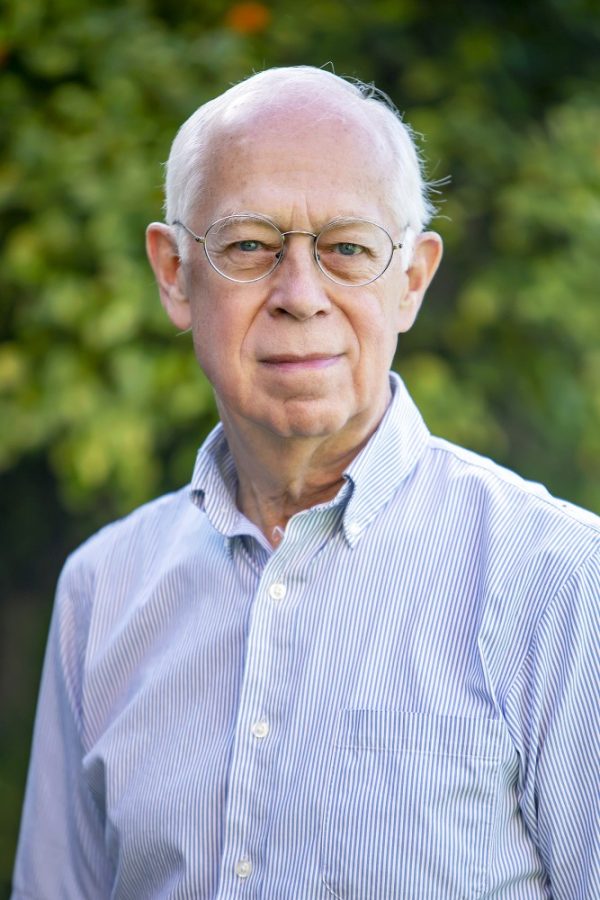John Rutherfoord, a professor of physics at the University of Arizona College of Science, is one of five new regents’ professors on campus following Arizona Board of Regents’ approval of his appointment in the April 11 meeting on campus.
“I was in my lab, and I dropped by my office to find a voicemail on my answering machine from [UA] President Robbins asking me to call him back,” Rutherfoord said. “He said that I was to be named a regents’ professor. Naturally, I was very pleased.”
RELATED: UA regents professor Carol Barnes elected to prestigious National academy of Sciences
Rutherfoord came to the UA in 1988 to help establish the university’s particle physics research group, helping the UA become a finalist to host the Superconducting Super Collider. The SSC was to be used to collide elementary particles of matter together to study physics at a basic level.
When this project lost funding from the government, Rutherfoord and his team turned their research efforts to the Large Hadron Collider maintained by the European Organization for Nuclear Research, or CERN, in Switzerland.
“John Rutherfoord has led the UA effort on the Large Hadron Collider experiment for over two decades,” said Elliot Cheu, associate dean of the College of Science. “He was responsible for introducing new detector technology to the ATLAS experiment, which completely changed the final design.”
Rutherfoord and his team at the UA were selected to create one of the most challenging and critical pieces of equipment for the Large Hadron Collider, a particle sensor that could withstand the large amounts of radiation and collect data from a huge number of collisions.
Rutherfoord’s particle sensor, which measures the energy of the products of these collisions, played a major role in the discovery of the Higgs boson, which gives mass to elementary particles. The Higgs boson’s discovery helped strengthen the Standard Model of particle physics.
“Dr. Rutherfoord is acknowledged as one of the key leaders at CERN and is internationally acclaimed as one of the world’s pioneers in particle detectors,” Rutherfoord’s university nomination letter reads.
Rutherfoord built his sensors in a basement at the UA with help from students, some of whom have returned to the UA to continue their research after graduation.
“The Large Hadron Collider recently increased the number of collisions it can generate by tenfold,” Rutherfoord said. “In the summer of 2021, I will go to CERN to understand how a sensor like ours becomes compromised [in these new conditions] and how to work out the corrections to recovery best we can.”
According to his nomination letter, Rutherfoord’s research at the UA has been supported continuously over the past 25 years by grants from various funding agencies. This has allowed his team to operate with a budget often exceeding $1 million a year, enabling him to hire UA students and purchase critical equipment to further his efforts.
RELATED: Smashing protons to deliver answers
While Rutherfoord is passionate about his research and the opportunities he has received at the UA, he said it is the community on campus that has kept him at the university for over 30 years.
“We have a really nice physics department on campus. People get along, and it has been a very pleasant department. That is the premier reason I am still here,” Rutherfoord said.
You can read profiles on all five of UA’s new regents’ professors on the Daily Wildcat’s website.
Follow Randall Eck on Twitter









